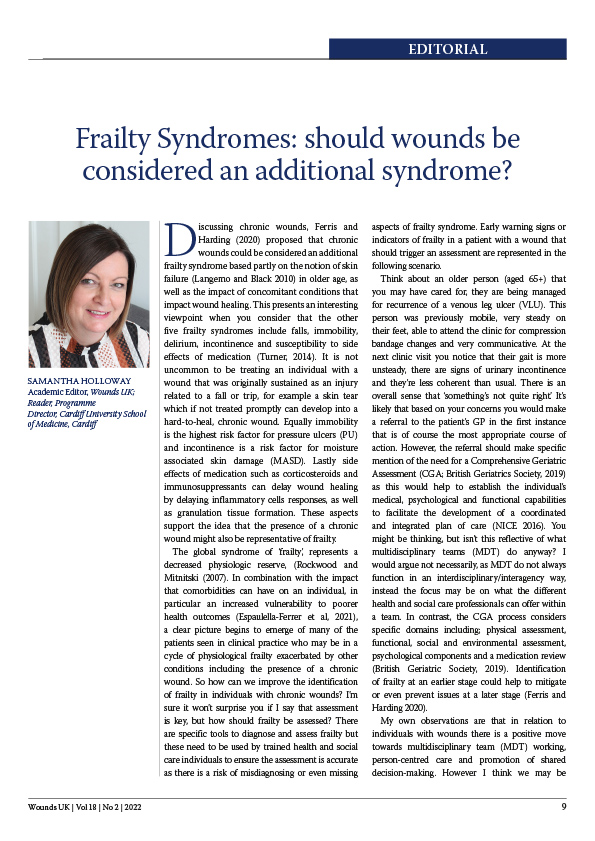Discussing chronic wounds, Ferris and Harding (2020) proposed that chronic wounds could be considered an additional frailty syndrome based partly on the notion of skin failure (Langemo and Black 2010) in older age, as well as the impact of concomitant conditions that impact wound healing. This presents an interesting viewpoint when you consider that the other five frailty syndromes include falls, immobility, delirium, incontinence and susceptibility to side effects of medication (Turner, 2014). It is not uncommon to be treating an individual with a wound that was originally sustained as an injury related to a fall or trip, for example a skin tear which if not treated promptly can develop into a hard-to-heal, chronic wound. Equally immobility is the highest risk factor for pressure ulcers (PU) and incontinence is a risk factor for moisture associated skin damage (MASD). Lastly side effects of medication such as corticosteroids and immunosuppressants can delay wound healing by delaying inflammatory cells responses, as well as granulation tissue formation. These aspects support the idea that the presence of a chronic wound might also be representative of frailty.







